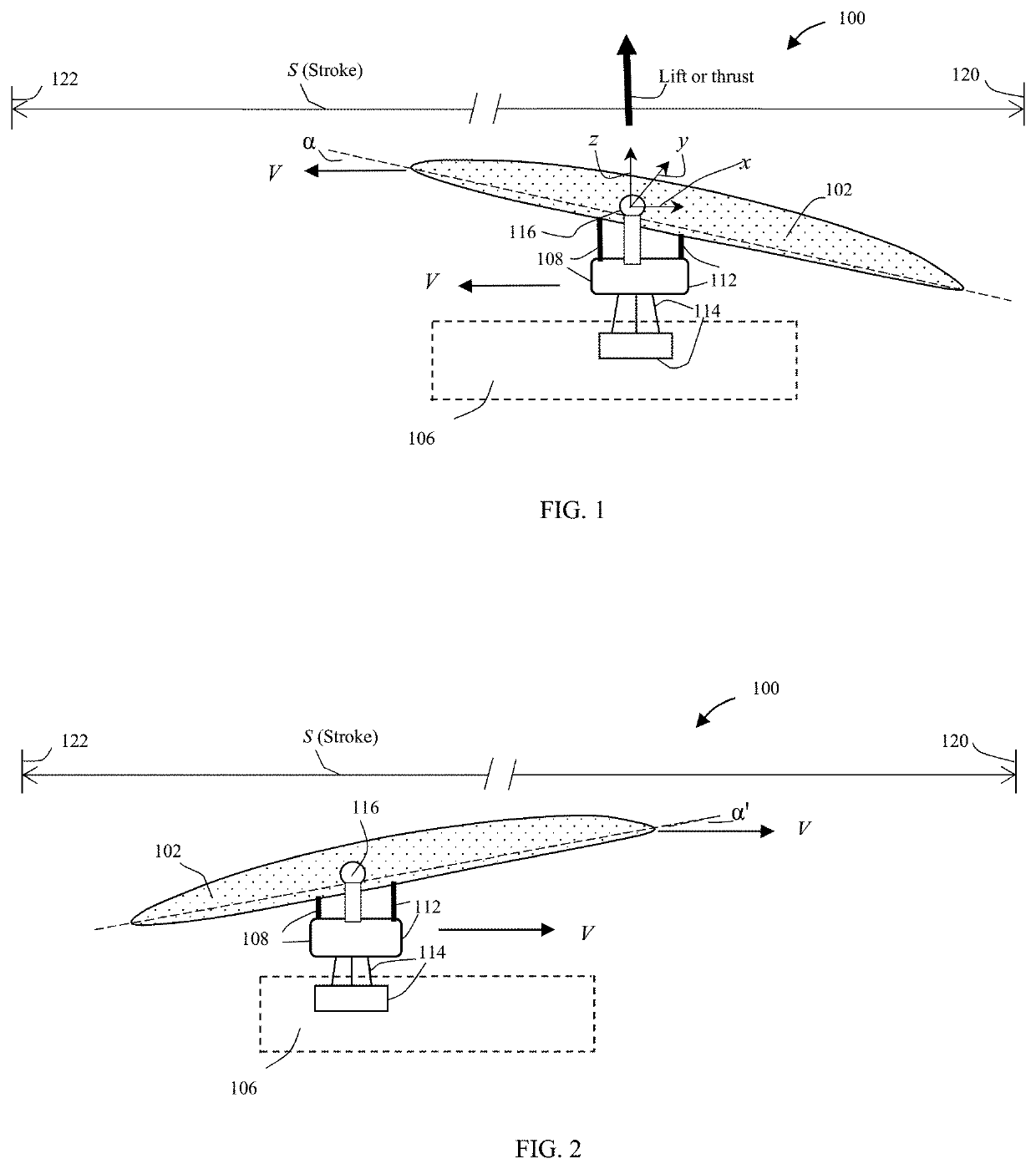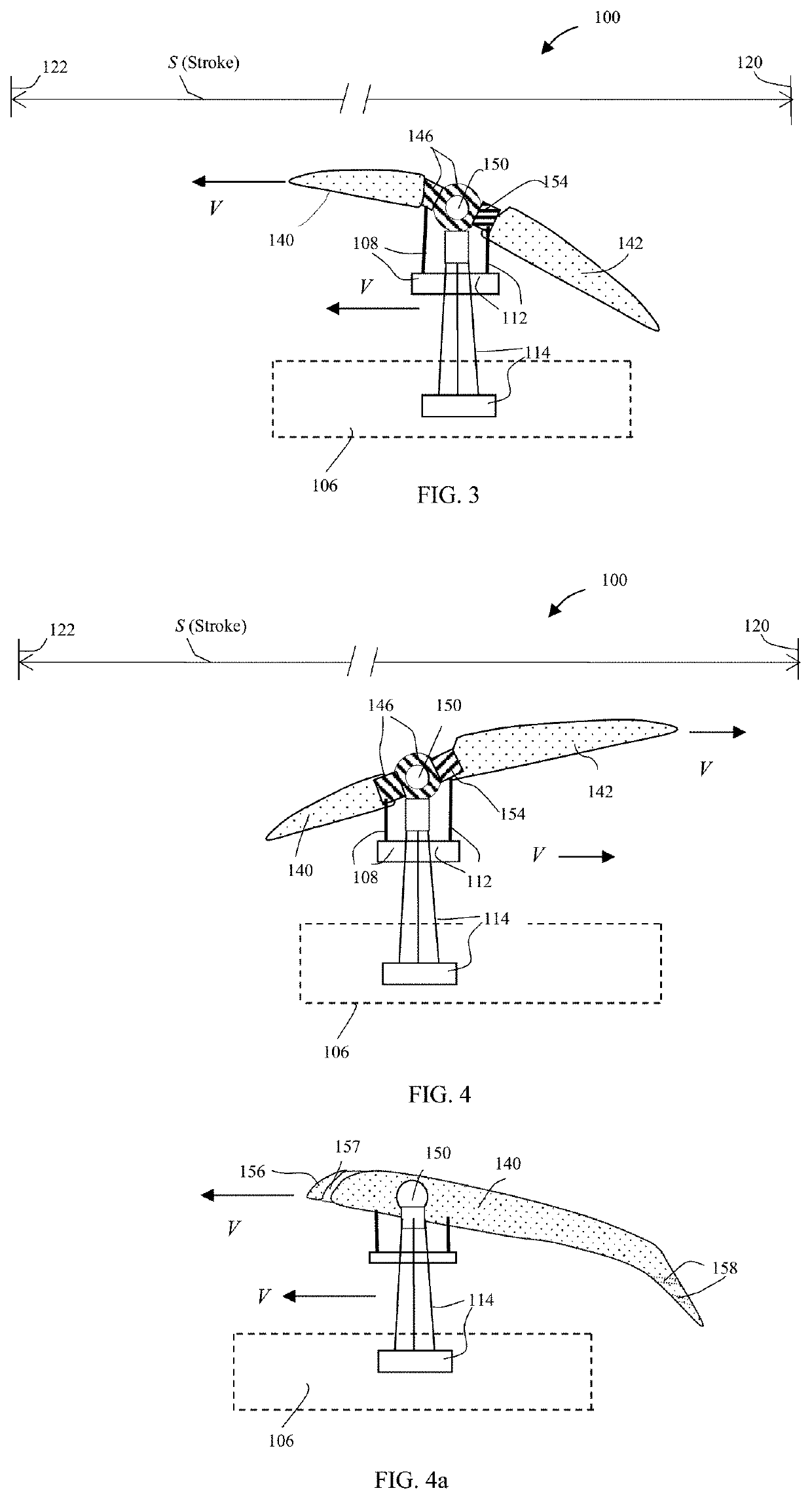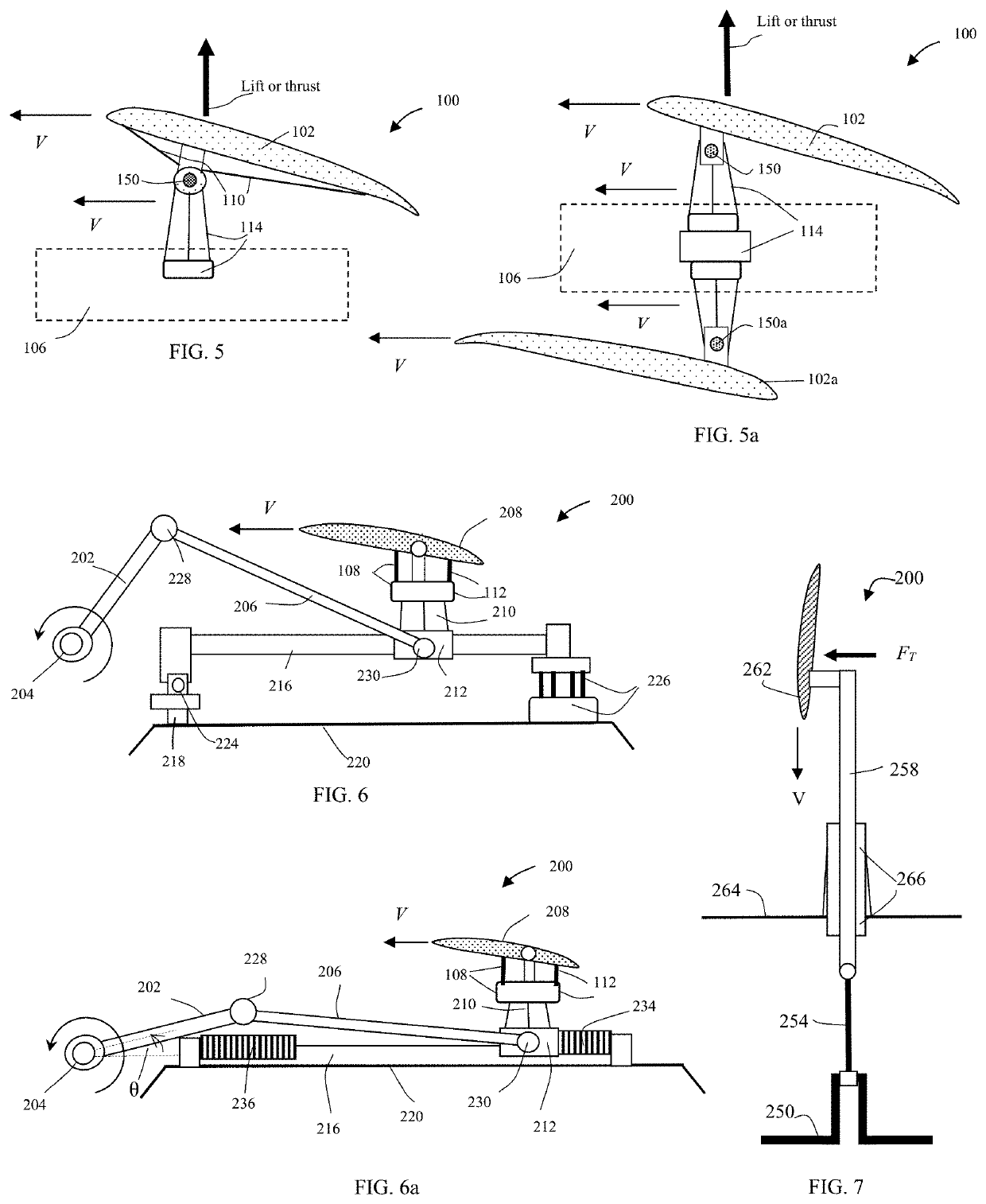Reciprocating Lift and Thrust Systems
a technology of thrust system and reciprocating lift, which is applied in the direction of vertical landing/take-off aircraft, ornithopters, transportation and packaging, etc., can solve the problems of poor safety record, poor safety, and insufficiently high lift, and achieves improved safety and reliability, and the cost of the driver system may be potentially much lower.
- Summary
- Abstract
- Description
- Claims
- Application Information
AI Technical Summary
Benefits of technology
Problems solved by technology
Method used
Image
Examples
embodiment 108
[0053]FIG. 1 shows a schematic illustration of a sectional view of a reciprocating lift or thrust system according to an embodiment of the subject invention. Referring to FIG. 1, the system 100 comprises an airfoil 102 and a reciprocating driver 106 that may produce a reciprocating motion of the airfoil 102 with a stroke S. Said stroke may be defined based on any section of the airfoil and it may be related to a reference section such as a midsection of the airfoil. In FIG. 1, said airfoil 102 travels toward the left dead-end 122 of the stroke with a positive angle of attack α, producing a lift or thrust. The system further comprises a control unit with an embodiment 108 or 112 shown in the figure. Near or at the left dead-end 122, the activation of the control unit 108 or 112 may generate a counter-clockwise rotation of the airfoil around a joint mechanism 116 by an angle as the airfoil changes direction and moves from the left end 122 toward the right end 120 with an angle of atta...
embodiment 200
[0064]Said reciprocating mechanical driver maybe, but not limited to, a slider-crank mechanism driver, a cam-follower mechanism driver, a scotch yoke mechanism driver, a swashplate mechanism driver, or a wobble (Nutator or Z-crank) driver. FIG. 6 shows schematically an embodiment 200 of this invention with an airfoil 208 driven by a slider-crank mechanism driver. The airfoil 208 is driven by a crankshaft 204 through a crank arm 202 and a connecting rod 206. The crankshaft 204 in turn is driven by a power system (not shown). Through the connecting rod 206 as well as a supporting structure 210 that may include a roller or bearing structure 212, the rotation of the crankshaft 204 creates a reciprocating motion of the airfoil 208. Said roller or bearing 212 may be mounted on a track or guide structure 216, and slide, together with the airfoil 208, along the track 216. The track 216 may work as a guide for the reciprocating motion of the airfoil assembly 208 and carry loads of the lift o...
embodiment 300
[0068]Another embodiment of the reciprocating driver is an electromagnetic driver. FIG. 8 shows schematically an embodiment 300 of the electromagnetic driver, employing a pair of electromagnets 302 and 304 and a pair of permanent magnets 310 and 312. Said electromagnets may be energized by a power source such as a battery system (not shown) of suitable current and voltage. In the case of FIG. 8, the polarity of the electromagnet is set in such a way that it repels the corresponding permanent magnet when the electromagnet is energized. Through connecting rods 314 and 316, said permanent magnets 310 and 312 are connected to an airfoil assembly 350 through supporting structures 320. Said supporting structure 320 includes a bearing or rolling slider 324 that may slide along a track 328. When the permanent magnet 312 is near the right dead end of a reciprocating stroke, the electromagnet 302 is energized, and the generated repulsive electromagnetic force pushes the permanent magnet 312 a...
PUM
 Login to View More
Login to View More Abstract
Description
Claims
Application Information
 Login to View More
Login to View More - R&D
- Intellectual Property
- Life Sciences
- Materials
- Tech Scout
- Unparalleled Data Quality
- Higher Quality Content
- 60% Fewer Hallucinations
Browse by: Latest US Patents, China's latest patents, Technical Efficacy Thesaurus, Application Domain, Technology Topic, Popular Technical Reports.
© 2025 PatSnap. All rights reserved.Legal|Privacy policy|Modern Slavery Act Transparency Statement|Sitemap|About US| Contact US: help@patsnap.com



